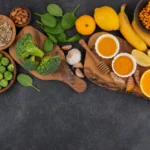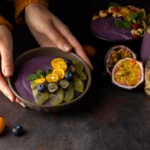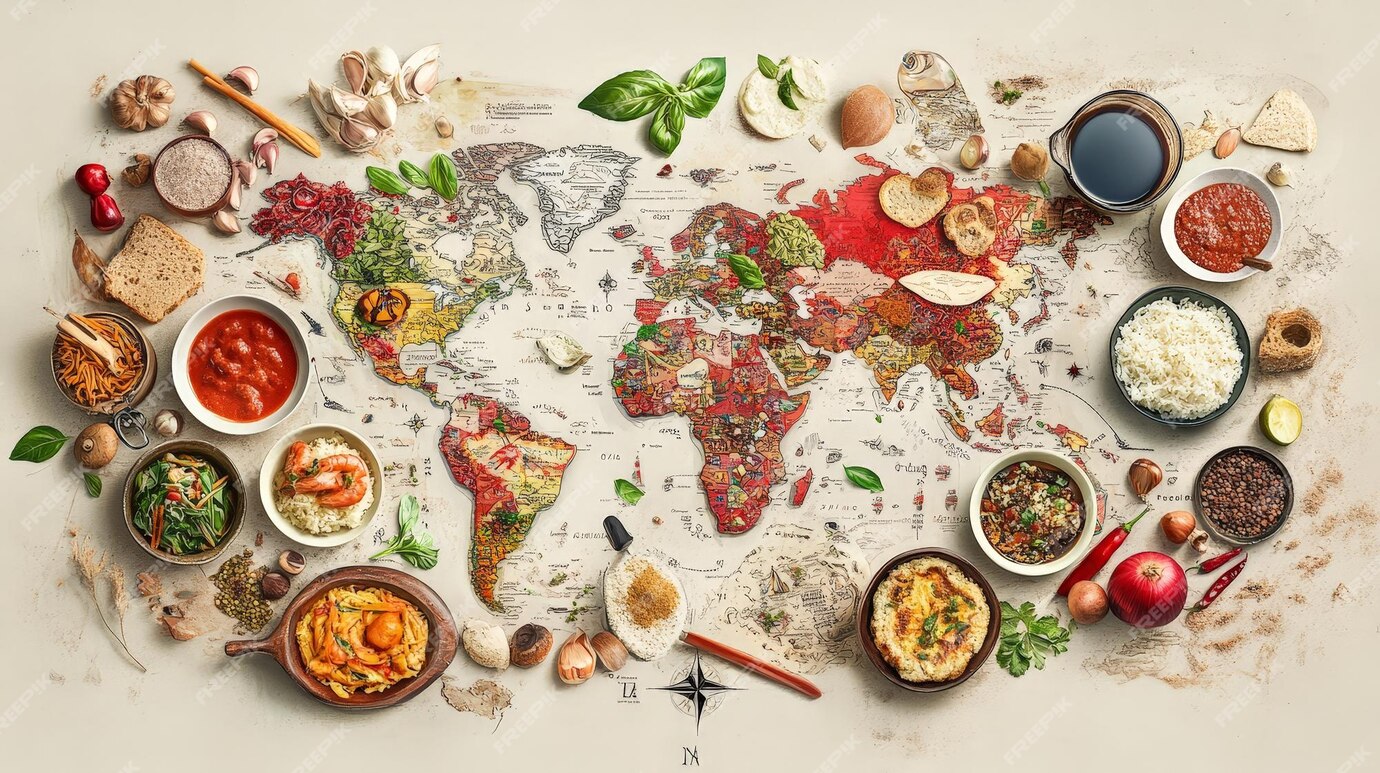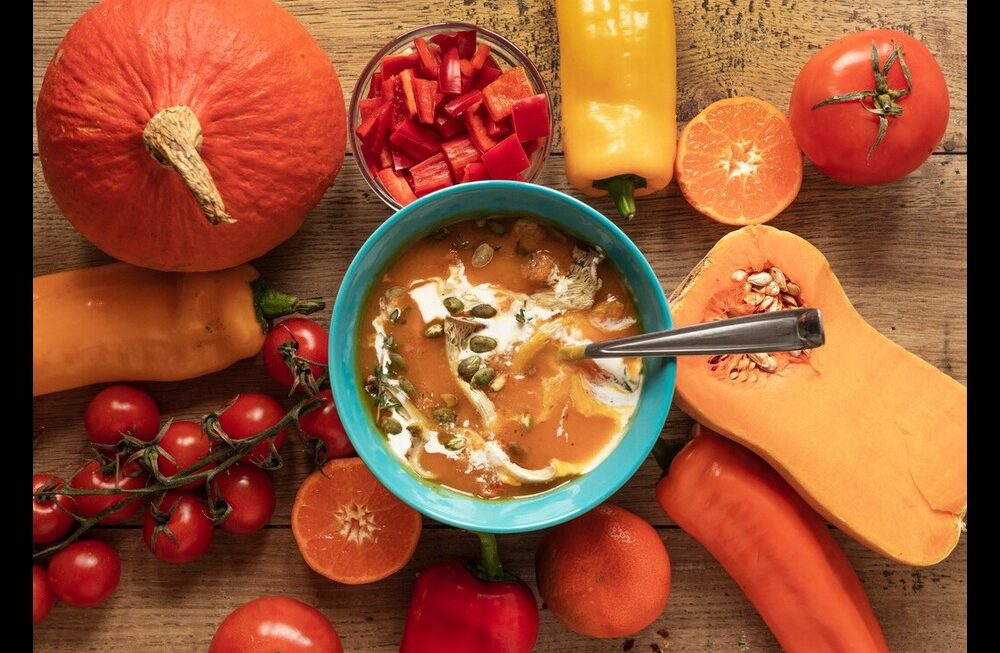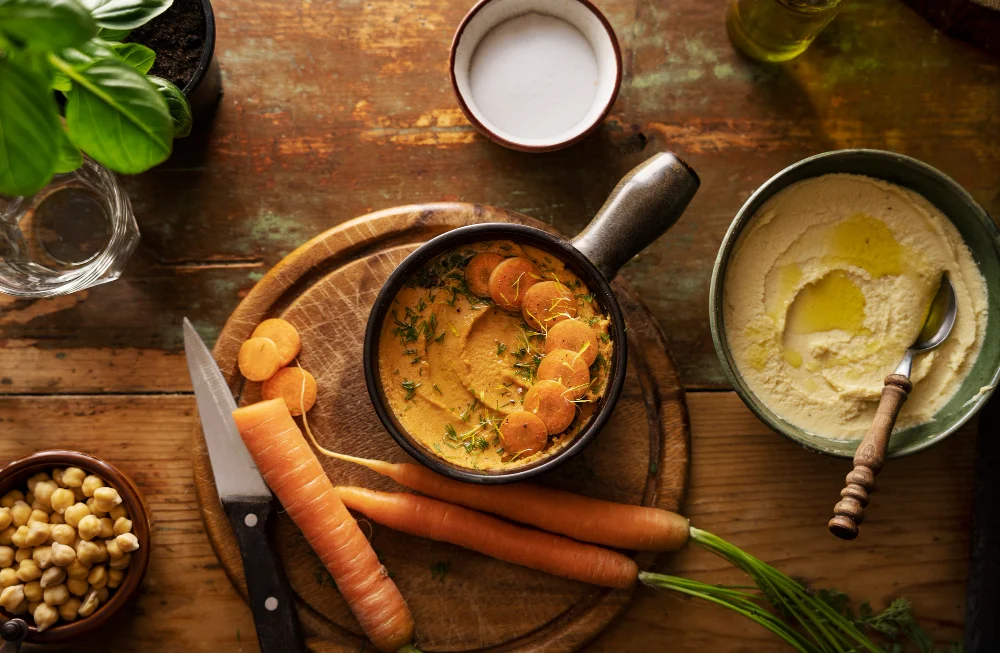One of the great joys of food is its ability to transport us across borders, offering a taste of different cultures and traditions. For those embracing a vegan lifestyle, this culinary exploration becomes even more exciting, revealing that vibrant, flavourful, and deeply satisfying plant-based dishes are cornerstones of cuisines worldwide. Many ethnic recipes are naturally vegan or easily adapted, moving far beyond Western staples. This guide invites you on a journey to explore vegan ethnic recipes, examining the diverse nutritional landscapes, the ethical considerations of cultural exchange and ingredient sourcing, the environmental aspects of global foodways, and providing practical tips and recipes to bring international flavours into your home kitchen, right here in Vadodara or wherever your culinary curiosity takes you.
Explore Best Vegan Ethnic Recipes & Global Cuisine
LENS 1: Nutritional Analysis (A World of Plant Nutrients)
Exploring global vegan cuisines unveils a remarkable diversity of nutrients and healthy eating patterns. Each tradition offers unique strengths:
- Mediterranean (Italy, Greece, Middle East): Renowned for heart-healthy monounsaturated fats from olive oil, abundant fresh vegetables and fruits (antioxidants, vitamins), legumes (fiber, protein), whole grains, and herbs. Think lentil soups, hummus, vegetable pasta dishes (like Aglio e Olio), Greek salads (vegan feta optional).
- East Asian (Japan, China, Korea): Often features soy products like tofu and tempeh (complete protein), diverse vegetables cooked quickly (preserving nutrients), sea vegetables like nori (iodine, minerals), fermented foods like miso and kimchi (potential gut health benefits), rice and noodles (carbs). Key Consideration: High sodium content in soy sauce and some fermented products – use lower-sodium options where possible.
- Southeast Asian (Thai, Vietnamese): Characterized by fresh herbs (coriander, mint, basil), spices (lemongrass, galangal, chili), coconut milk (richness, but high saturated fat – use moderately), rice/rice noodles, abundant fresh vegetables, tofu, and peanuts. Often balances sweet, sour, spicy, salty flavours. Think fresh spring rolls, vegetable green/red curries (ensure no fish/shrimp paste).
- Ethiopian: Largely plant-based tradition. Features injera, a fermented flatbread made from teff (a gluten-free ancient grain rich in iron, calcium, protein), served with various flavourful lentil stews (misir wot), split pea stews (kik alicha), and vegetable dishes (gomen wot – collard greens). High in fiber and plant protein. Often naturally vegan-friendly.
- Mexican (Authentic style): Relies heavily on the “three sisters” – corn (maize – carbs, fiber), beans (protein, fiber, iron), and squash – plus avocados (healthy fats), tomatoes/salsa (Vit C, lycopene), chilies, lime, and spices like cumin. Think bean tacos/burritos (use corn/whole wheat tortillas), guacamole, salsa, hearty bean soups.
- Indian (Our Home Base): Diverse regional cuisines heavily featuring legumes (dal, chana, rajma), whole grains (roti from wheat/millets, rice), vegetables (seasonal sabzis), nuts/seeds, and an incredible array of spices with potential health benefits. Needs attention to avoiding ghee/dairy for vegan versions.
- Overall: Exploring these cuisines naturally increases intake of diverse plant proteins, fibers, phytonutrients, vitamins, and minerals. Remember B12 supplementation is crucial regardless of cuisine choice. Which global cuisine’s nutritional profile (e.g., high fiber Ethiopian, healthy fats Mediterranean, protein-rich East Asian) appeals most to your health goals?
Nutritional Deep Dive: Protein Around the World – Vegan Sources
Global cuisines showcase diverse plant protein strategies:
- India/South Asia: Lentils (dal), chickpeas (chana), kidney beans (rajma), mung beans, peas (matar).
- East Asia: Soybeans (edamame), Tofu, Tempeh, Natto, Seitan (wheat gluten – not GF).
- Mediterranean/Middle East: Chickpeas (hummus, falafel), Lentils (soups, salads), Fava beans, White beans.
- Mexico/Latin America: Black beans, Pinto beans, Kidney beans, Corn (moderate protein), Pumpkin seeds (pepitas).
- Ethiopia: Lentils, Split peas, Chickpeas, Teff grain (injera).
- Common Globally: Nuts and Seeds used as ingredients or garnishes.
Voice of Experience (Dietitian specializing in Global Diets): “Exploring global vegan cuisines is fantastic for nutritional diversity! Ethiopian food offers amazing fiber and iron from lentils and teff. East Asian cuisines provide quality protein from soy. Mediterranean diets are rich in healthy fats and antioxidants. By sampling different ethnic recipes, vegans can easily achieve a wide spectrum of nutrients while enjoying incredible flavours.” – Dr. Leena Sharma, RDN
LENS 2: Ethical Framework (Cultural Respect & Compassion)
Exploring vegan ethnic recipes involves navigating cultural traditions with respect while upholding compassionate values.
- Veganism Across Cultures: Recognize that plant-based eating has deep roots in many cultures (like vegetarianism in India, or largely plant-based diets historically in many regions) long before the modern “vegan” label. Exploring ethnic recipes connects us to this global plant-based heritage.
- Respectful Adaptation: When veganizing a traditional dish that typically contains meat or dairy, approach it with respect. Aim to capture the essence and flavour profile using plant-based ingredients, rather than creating a mere imitation or claiming it’s “more authentic.” Give credit to the cuisine’s origins. Avoid superficial “fusion” that disrespects cultural context.
- Ethical Sourcing of Global Ingredients: Be mindful of the sourcing:
- Fair Trade: Choose Fair Trade certified spices, rice, quinoa, coffee, cocoa, sugar, vanilla when buying international staples.
- Sustainability: Consider the environmental and social impact of imported specialty ingredients (e.g., specific chili varieties, exotic fruits). Prioritize finding local substitutes where feasible.
- Sharing & Cross-Cultural Understanding: Sharing delicious vegan dishes from different cultures is a wonderful way to foster appreciation, break down stereotypes (about both veganism and other cultures), and connect with people over shared food experiences.
- Reducing Waste: Many traditional cuisines inherently practice resourcefulness and waste reduction (using all parts of a vegetable, preserving methods). Learning these techniques is ethically valuable. How can you ensure you are exploring and adapting ethnic recipes respectfully, honouring their cultural origins?
Hidden Benefits: Broadened Worldview
Engaging with global cuisines through food – learning about ingredients, techniques, and cultural contexts – broadens one’s understanding and appreciation of the world’s diverse peoples and traditions, fostering empathy and connection.
Voice of Experience (Vegan Travel Blogger): “Exploring global cuisines as a vegan is incredible! It pushes you to discover naturally plant-based dishes you might otherwise miss. Learning to ask for vegan options respectfully, trying local vegetable markets, and appreciating the plant-based roots in many traditions has enriched my travels and understanding of food ethics immensely.” – @GlobalVeganExplorer (hypothetical handle)
Critical Reassessment: Authenticity vs. Accessibility
Striving for absolute authenticity using imported ingredients can be expensive and inaccessible for many home cooks, especially outside major metropolitan hubs like Vadodara. Finding a balance between capturing the spirit of a dish and using readily available (perhaps local Indian) substitutes is often the most practical and ethical approach for everyday cooking.
LENS 3: Ingredient Science & Environment (Sustainable Spice & Simmer)
Exploring global cuisines involves understanding unique ingredients and techniques, while considering the environmental impact of bringing the world to your plate.
- The Science Behind Ethnic Flavors & Textures:
- Fermentation: Creates complex flavours and textures in kimchi (Korea), miso/natto (Japan), tempeh (Indonesia), injera (Ethiopia), dosa/idli (India). Involves microbial transformation.
- Emulsification: Key for creamy sauces like Thai curry (coconut milk fat + water) or hummus (tahini fat + water/lemon).
- Nixtamalization (Corn): Traditional Mesoamerican process of soaking maize in alkaline solution, improving nutritional value (niacin availability) and texture for tortillas/tamales.
- Spice Chemistry: Different compounds in spices are released differently based on cooking methods (e.g., fat-soluble compounds in tadka, water-soluble in simmering).
- Environmental Considerations:
- Lower Footprint Staples: Many global cuisines heavily feature inherently low-impact staples: lentils/beans (India, Ethiopia, Mexico), rice (Asia – high water use but lower GHG than meat), corn (Mexico), teff (Ethiopia – low water), vegetables. Vegan versions almost always have a lower footprint than meat-based counterparts.
- Food Miles: Importing specialty ingredients (exotic fruits, vegetables, specific chili pastes, sauces, grains like quinoa) significantly increases the carbon footprint of your meal.Strategy: Focus on cuisines that utilize ingredients readily available locally (like many Indian, some adaptable Thai or Mexican dishes using produce available in Vadodara) or find good local substitutes.
- Ingredient Focus: Coconut milk production has land use implications in tropical regions. Unsustainable soy farming contributes to deforestation. Choose certified/sustainable sources when possible. Prioritize water-efficient grains like local millets.
- Packaging Waste: Imported sauces, pastes, noodles often come in significant packaging. Making components from scratch using bulk staples reduces this. How can you prioritize cuisines or recipes that rely more heavily on ingredients readily available locally in Vadodara/Gujarat to reduce food miles?
Market Transformation Map Suggestion: Data showing the increased shelf space dedicated to international foods and ingredients (e.g., different types of noodles, sauces like soy/tamari, pastes like miso/gochujang, coconut milk) in mainstream Indian supermarkets and online grocery platforms over the past decade.
Voice of Experience (Chef specializing in Global Vegan Cuisine): “The beauty of vegan ethnic cooking lies in understanding core techniques and flavour profiles. You can often substitute local seasonal vegetables while maintaining the spirit of a dish – maybe using local gourds in a Thai green curry base made from scratch, or Vadodara tomatoes in an Italian marinara. It’s about adapting sustainably.” – Chef Priya Rao, “Global Green Plate”
LENS 4: Everyday Practitioner’s Experience (Recipes, Techniques & Sourcing in India)
Bringing global flavours into your home kitchen is an exciting culinary adventure! Here are practical tips and accessible vegan ethnic recipes.
Sourcing International Ingredients in Vadodara/India:
- Large Supermarkets & Hypermarkets: Chains like Reliance Fresh/Smart, D-Mart, Star Bazaar, or local equivalents often have dedicated international food sections with soy sauce, various noodles, pasta, olive oil, sometimes coconut milk, basic herbs.
- Specialty Food Stores: Larger cities often have stores focusing on imported goods, potentially stocking items like miso paste, specific vinegars, nori, tahini, vegan cheeses.
- Online Retailers: Amazon.in, BigBasket, Grofers (now Blinkit), Nature’s Basket online, and specialized vegan stores (like Vegan Dukan) offer a wide range, delivering to many locations including Vadodara (check serviceability). This is often the best bet for less common items.
- Local Substitutions: Be creative! Use local chilies instead of specific Thai/Mexican varieties. Try tamarind or kokum for sourness instead of imported vinegars. Use local peanuts/sesame instead of expensive imported nuts in some recipes. Use local millets instead of quinoa.
Simplified Vegan Ethnic Recipe Ideas:
- Easy Thai Green Curry: Sauté store-bought vegan green curry paste (check ingredients!) with ginger/garlic. Add coconut milk and vegetable broth. Simmer with firm vegetables (peppers, carrots, beans, broccoli, bamboo shoots – use available ones), cubed tofu or chickpeas. Finish with lime juice and fresh basil/coriander. Serve with rice.
- Vietnamese-Style Fresh Summer Rolls: Soften rice paper wrappers in water. Fill with cooked rice vermicelli noodles, lettuce, fresh mint/coriander, shredded carrot, cucumber sticks, and marinated tofu strips or cooked shrimp alternative (or just veggies). Roll tightly like a burrito. Serve with Peanut Dipping Sauce (peanut butter, hoisin sauce – check vegan, lime, water, chili).
- Simple Ethiopian Lentil Stew (Misir Wot Inspired): Sauté onions, garlic, ginger in oil. Add berbere spice blend (key flavour – buy online or make a simplified version with paprika, cayenne, ginger, garlic, fenugreek etc.). Stir in rinsed red lentils (masoor dal) and vegetable broth/water. Simmer until lentils are very soft and stew is thick. Serve with rice or roti (as injera substitute).
- Quick Black Bean Tacos/Bowls: Sauté onions/garlic. Add cooked black beans (canned or pressure-cooked), corn, cumin, chili powder, oregano, pinch of salt. Warm through. Serve in roti/chapati used as soft taco shells, or over rice in a bowl. Top with fresh salsa (tomato, onion, coriander, lime), avocado/guacamole (if available).
- Classic Vegan Pasta Aglio e Olio (Italian): Cook spaghetti al dente (reserve pasta water). Sauté plenty of sliced garlic (and optional chili flakes) in olive oil until fragrant (don’t burn!). Toss hot pasta in the oil, adding splashes of reserved pasta water to create a light sauce. Finish with fresh parsley (or coriander). Simple, fast, vegan.
Tips for Success:
- Start Simple: Choose recipes with fewer, more accessible ingredients first.
- Master Basic Techniques: Learn simple stir-frying, sauce making, curry bases.
- Prep Your Ingredients (Mise en Place): Especially important for quick-cooking dishes like stir-fries.
- Taste and Adjust: Seasoning is key in ethnic cooking. Taste and adjust salt, spice, acidity, sweetness as you go.
- Don’t Fear Substitutions: If you can’t find a specific vegetable or vinegar, try a similar local alternative. The result might be slightly different but still delicious!
What global cuisine are you most curious to explore with vegan recipes using ingredients available in Vadodara?
Daily Impact: Themed Meal Nights
Introduce variety by having themed meal nights – “Mexican Monday,” “Thai Tuesday,” “Italian Wednesday,” etc. – using simple, adaptable vegan recipes from those cuisines.
Voice of Experience (Vadodara Home Cook exploring Global Food): “I love trying new cuisines! While finding things like authentic miso paste means ordering online to Vadodara, many Thai or Mexican recipes work beautifully using vegetables from our local market alongside staples like coconut milk or beans which are easier to find now. Simple adaptations make global vegan cooking very possible here.” – Ms. Anjali Desai, University Professor
Alternative Approaches: Fusion & Focus
- Indian Fusion: Intentionally blend global techniques or flavours with Indian spices and ingredients for unique creations (e.g., Masala Pasta, Tandoori Tofu Tacos).
- Deep Dive: Instead of sampling broadly, choose one cuisine you love (e.g., Thai or Mexican) and focus on mastering several key vegan dishes from that tradition.
PERSPECTIVE INTERSECTION MATRIX
- Nutrition & Diversity (Lens 1 & 4): Exploring global cuisines practically (Lens 4) naturally introduces diverse ingredients and nutrients lacking in monotonous diets (Lens 1).
- Ethics & Sourcing (Lens 2 & 4): Ethical considerations about cultural respect and ingredient sourcing (Lens 2) guide practical recipe adaptation and purchasing choices for international ingredients (Lens 4).
- Environment & Locality (Lens 3 & 4): Environmental concerns about food miles (Lens 3) encourage practitioners (Lens 4) to adapt global recipes using local, seasonal substitutes where possible.
- Science & Technique (Lens 3 & 4): Understanding the science behind techniques like fermentation or emulsification used in ethnic cuisines (Lens 3) helps home cooks achieve more authentic results (Lens 4).
- Practicality & Exploration (Lens 4 & All): The practical desire for new flavours and experiences (Lens 4) drives the exploration of global cuisines, which can be navigated successfully by considering nutritional balance (Lens 1), ethical respect (Lens 2), and sustainable choices (Lens 3).
MISCONCEPTION ANALYSIS
| Misconception | Reality |
| Most ethnic cuisines are too meat-heavy to be enjoyed vegan. | False. Many global cuisines have incredibly rich vegetarian traditions that are easily veganized or are largely plant-based by default (e.g., Ethiopian, many South Indian, Mediterranean, authentic Mexican staples rely heavily on plants). |
| You need fish sauce, oyster sauce, dairy, or meat broth for authentic flavor. | False. Authentic depth and umami can be achieved veganically using soy sauce/tamari, mushrooms, nutritional yeast, miso paste, fermented foods, seaweed, tomato paste, and skillful use of aromatics and spices specific to the cuisine. |
| Making authentic vegan ethnic recipes requires obscure, hard-to-find ingredients. | While some niche ingredients exist, many iconic dishes rely on staples that are increasingly available globally (soy sauce, coconut milk, tofu, common spices, rice, noodles) or can be reasonably substituted with local alternatives (e.g., local chilies, vinegar, vegetables). |
| Vegan versions of ethnic dishes are pale imitations and not ‘real’. | Vegan adaptations are valid culinary creations in their own right. They respectfully capture the flavour profiles and spirit of a dish using compassionate ingredients. Authenticity is complex, but deliciousness is achievable. |
| Exploring global cuisines veganically is too complicated for everyday cooking. | Start simple! Many ethnic dishes are straightforward one-pot meals (curries, stews), stir-fries, or simple assemblies (tacos, summer rolls). Focus on mastering a few key recipes from cuisines you enjoy. |
KEY TURNING POINTS
- Globalization & Migration: Spread cuisines and ingredients around the world.
- Internet & Food Blogging: Made authentic and adapted recipes from global cuisines instantly accessible to home cooks everywhere.
- Growth of International Grocery Stores/Sections: Increased availability of previously niche ingredients in mainstream markets, including in India.
- Rise of Veganism Globally: Created demand for plant-based versions of popular ethnic dishes.
- Travel & Culinary Tourism: Exposed more people to diverse global flavours, sparking interest in recreating them at home.
- Chef Innovation in Global Plant-Based Cuisine: Professional chefs demonstrating the potential of high-end vegan cooking across different culinary traditions.
SYNTHESIS & RECOMMENDATIONS
Embark on a delicious adventure by exploring vegan ethnic recipes! Cooking plant-based opens up an incredible passport to global flavours, showcasing how cultures worldwide have long celebrated vegetables, legumes, grains, and spices. From the hearty lentil stews of Ethiopia and the fresh rolls of Vietnam to the comforting pasta of Italy and the vibrant curries of Thailand (and of course, the immense diversity within India itself), there’s a world of compassionate, flavourful food waiting. While sourcing specific ingredients might sometimes require effort (especially outside major Indian cities), many dishes can be beautifully adapted using local substitutes and mastering core techniques. Focus on flavour profiles, embrace seasonal produce from your local Vadodara markets, cook with respect and curiosity, and enjoy the journey of tasting the world, vegan style.
Recommendations for Your Global Vegan Kitchen Adventure:
- Start with Naturally Vegan-Friendly Cuisines: Explore cuisines like Ethiopian, South Indian (verify ghee/dairy), many Mediterranean dishes, or certain East/Southeast Asian vegetable/tofu dishes.
- Master Core Techniques: Learn basic stir-frying, curry paste making (or using store-bought vegan versions), simple sauce balancing, and legume cooking.
- Focus on Flavor Profiles: Identify the key herbs, spices, and aromatics that define a cuisine, and try to replicate that essence even if you substitute some main ingredients.
- Source Smartly in India: Check larger supermarkets, specialty stores, and reliable online retailers for international ingredients. Don’t underestimate local markets for fresh produce!
- Substitute Wisely: Learn common local substitutes (e.g., tamarind/kokum/lemon for specific vinegars, jaggery for palm sugar, local chilies).
- Use Reliable Recipes: Start with well-tested recipes from reputable blogs (like Vegan Richa for Indian/global), cookbooks, or chefs specializing in vegan ethnic cuisine.
- Cook Seasonally & Locally Where Possible: Adapt recipes to use fresh produce available near you for best taste, cost, and sustainability.
- Be Curious & Respectful: Learn a little about the culture behind the food you’re making. Enjoy the process of discovery!







